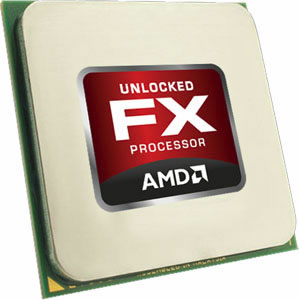Final Thoughts
Breaking down our benchmark results we find that the AMD FX-8150 offers huge performance improvements over the Phenom II range when testing with Excel 2010, while it matched the Core i5-2500K and Core i7 920 processors. Our custom WinRAR benchmark also heavily favored the FX-8150 over the Phenom II, matched the Core i7 920 and trailed behind Sandy Bridge processors in this test.
The Adobe Photoshop CS5 benchmark also saw the FX processors provide decent performance gains over the Phenom II. Although the six-core FX-6100 was only slightly faster than the Phenom II X6 1100T, the eight core FX-8150 and FX-8120 processors provided significant gains and were able to match the Core i5-2500K.
The encoding performance was far less impressive as we found that clock for clock the FX processors were slower than the current Phenom II processors. The FX-6100 for example was slower than the Phenom II X6 1100T in our HandBrake and x264 HD Benchmark 4.0 tests. The FX-6100 did pull ahead by a decent margin when testing with TMPGEnc 4.0 XPress however. For the most part the FX-8150 was still considerably slower than the Core i5-2500K in our encoding benchmarks.
Finally, when it came time to play games the FX range was really no better than the Phenom II. To be completely honest, gaming on these high-end processors is so similar it's hardly worth worrying about. The FX-8150 was never more than a few frames per second slower than the Core i7-2600K at 1920x1200.
Given that today's latest game releases are only starting to adopt quad-core processors, having six or even eight threads available is of little consequence.
As for performance vs. power efficiency, the AMD FX processors are really not much better than the Phenom II range either, which is disappointing. When compared to Sandy Bridge CPUs, such as the Core i7-2600K and Core i5-2500K, the new FX processors stack up very poorly.
Despite the unlocked nature of the FX processors, overclocking is not fantastic. We were able to push the FX-8150 to just 4.4GHz on air (from the stock 3.6GHz). Compared to the 4.1GHz of our Phenom II X6 1100T it's not bad, but if you consider the 5.2GHz possible with a Core i5-2500K or Core i7-2600K it's definitely not great. Granted we were only able to achieve this extreme overclock using the Asus Maximus IV Extreme-Z, but all other P67 and Z68 motherboards reach at least 4.7 - 4.8GHz.
Then there is the question of value. At $245 the FX-8150 is pretty good, as is the FX-8120 at $205, and the FX-6100 at $165. The FX-8150 is 22% cheaper than the Core i7-2600K and this works to AMD's favor as the FX-8150 was often less than 20% slower.
However, is the FX-8150 a better buy than the Core i5-2500K? In terms of performance the AMD CPU was more often than not slower, if only by a small margin, while it does consume considerably more power and will not provide the same overclocking results. It's no secret who wins this round.
Considering that the FX-8120 is essentially the same processor as the FX-8150, we will look to it for the FX vs. Core i5 comparison. The FX-8120 costs $205 and it's unlocked – all FX processors are – so it can be easily modified to match or exceed the operating specifications of the FX-8150. Therefore we feel the cheaper FX-8120 gives the Core i5-2500K a serious run for its money and it's a worthy alternative. Meanwhile the FX-6100 is also great value at $165, as it undercuts both the Phenom II X6s but it wasn't always faster.
We won't deny it, we really were hoping for a lot more from Bulldozer and AMD's eight-core processors. It's disappointing to find these newly launched processors do little to improve AMD's situation. The FX processors come short of competing hand to hand with the now 9-months old Sandy Bridge processors, and in certain instances surpass their own Phenom II range. Still, this is just the start for Bulldozer, and there's much more to be seen from the FX range, or so AMD says.
